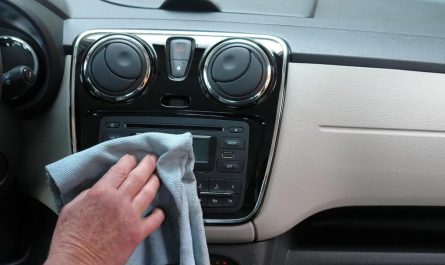Understanding Common Car Issues
Understanding common car problems is essential for every driver when it comes to car maintenance. Frequently, vehicles exhibit specific symptoms that can indicate underlying issues. For instance, drivers may notice unusual noises emanating from the engine or transmission, such as knocking, grinding, or hissing. These noises often signal that a component may need lubrication or replacement.
Moreover, warning lights on the dashboard serve as critical indicators of potential problems. For instance, the “check engine” light can signal issues ranging from minor sensor anomalies to significant engine failures. Other lights, like the oil pressure warning or battery light, should not be ignored, as they can reflect serious concerns that require immediate attention.
Changes in vehicle performance can also be symptomatic of common car issues. Drivers may experience decreased acceleration, a rough idle, or poor fuel efficiency. These performance changes can result from various factors, including clogged fuel filters, worn spark plugs, or issues with the fuel injection system. Regularly monitoring fuel efficiency can help identify when something is amiss.
Understanding why these issues arise is equally necessary. Many standard car problems stem from wear and tear due to regular use, lack of maintenance, or environmental factors that can lead to rust and corrosion. For example, extreme temperatures can affect battery performance and tyre pressure, while dirty air filters can restrict airflow, reducing engine efficiency.
In summary, being aware of the symptoms associated with common car issues prepares drivers to address problems proactively. Early detection prevents minor ailments from escalating into significant vehicle failures. This foundational knowledge sets the stage for exploring potential fixes in further sections, allowing drivers to confidently tackle car maintenance.
Basic Troubleshooting Techniques
Owning a vehicle often comes with the responsibility of addressing minor issues that may arise. You can diagnose and resolve common car problems independently by understanding basic troubleshooting techniques. This saves you money and enhances your confidence in handling vehicle maintenance. Before embarking on any troubleshooting endeavour, ensure you have essential tools, such as a tyre iron, jumper cables, and a basic tool kit. It’s also vital to prioritize safety by keeping a first aid kit in your vehicle and wearing gloves when necessary.
One of the most frequent issues car owners encounter is a flat tyre. First, address this and ensure the vehicle is parked on stable, flat surfaces. Use the tyre iron to loosen the lug nuts before lifting the car with a jack, allowing you to replace the flat tyre with the spare. Once the tyre is changed, tighten the lug nuts in a crisscross pattern to ensure even pressure.
Engine overheating is another common problem that can indicate a severe issue. If your gauge indicates the engine temperature rises, pull over safely and turn off the engine. Wait for the engine to cool before checking the coolant level and inspecting for leaks. It may also be helpful to inspect the radiator and hoses for any visible damage; if the problem persists, seeking professional assistance is recommended.
A dead battery often results from leaving lights on or an ageing battery. If you suspect your battery is the issue, attempt to jump-start the vehicle using jumper cables. Make sure to connect the wires correctly, with the positive first, followed by the negative. If jump-starting doesn’t work, it might be time to replace the battery or consult a technician.
While many car problems can be addressed with basic troubleshooting, knowing when to seek professional advice is crucial. If an issue appears complex or poses a risk, it is wise to consult an automotive professional to ensure your vehicle’s safety and longevity.
DIY Fixes for Common Problems
For many car owners, tackling do-it-yourself (DIY) fixes can seem daunting, yet several common problems can be resolved with guidance and some essential tools. This section aims to empower beginners with the knowledge to address these issues effectively.
One of the most straightforward tasks is changing the engine oil. You will need an oil filter wrench, an oil catch pan, and a socket set to perform this task. Begin by warming up the engine for a few minutes to thin the oil, making it easier to drain. Ensure the vehicle is on a flat surface and secure it with jack stands if necessary. After positioning the oil catch pan underneath, remove the drain plug and allow the oil to drain thoroughly. Next, replace the oil filter and reinstall the drain plug before adding new oil as specified in your owner’s manual.
Another commonly encountered issue is worn wiper blades, which can significantly impair visibility during inclement weather. To replace them, first, determine the correct size for your vehicle’s wipers, commonly available in auto parts stores. Lift the wiper arm away from the windshield; locate the release tab on the wiper blade, press it, and slide it off. Attach the new blade by sliding it into the arm until it clicks into place, then gently lower the arm back to its original position.

Flat tyres are another frequent problem that can be handled with basic knowledge. Ensure you have a spare tyre, a jack, and a lug wrench. First, loosen the lug nuts before lifting the vehicle off the ground with the jack. Once elevated, remove the lug nuts, flat tyre, and spare tyre mount. Finally, hand-tighten the lug nuts, lower the vehicle, and fully tighten the nuts to ensure the spare is secure.
By mastering these basic tasks, car owners can foster a sense of independence and confidence in managing their vehicle’s maintenance.
Common Car Problems and How to Fix Them A Beginner’s Guide
When to Seek Professional Help
Determining when to seek professional assistance for car repairs can be challenging for many vehicle owners, particularly those who may be inclined to tackle problems independently. However, specific scenarios warrant contacting a professional mechanic rather than attempting repairs at home. Recognizing the signs of severe automotive issues is crucial for maintaining safety and vehicle longevity.
Common indicators that suggest the need for professional intervention include persistent warning lights on the dashboard, unusual noises emanating from the engine or transmission, noticeable drops in performance, and issues with starting the car. These symptoms can signal more severe problems, such as engine failures or transmission issues, requiring proper diagnosis and repair expertise. Ignoring these warning signs can lead to more extensive damage and, ultimately, higher repair costs.
Choosing a reputable mechanic is equally significant. Begin by seeking recommendations from friends, family, or online reviews to identify mechanics with a solid track record. Once you have a list of potential candidates, asking pertinent questions to gauge their competency is helpful. Inquire about their experience with your vehicle make and model, certifications, and guarantees on work performed. A trustworthy mechanic should be willing to provide transparent answers regarding their diagnostic process and repair recommendations.
Cost management is another critical aspect when seeking professional help. Request a detailed, written estimate before any work begins to avoid unexpected expenses. Additionally, do not hesitate to seek multiple opinions for significant repairs, as this can provide a clearer understanding of the necessary services and reasonable pricing. Overall, recognizing when to consult a professional enhances your vehicle’s safety and promotes a balanced approach to car maintenance, ensuring long-term reliability.



